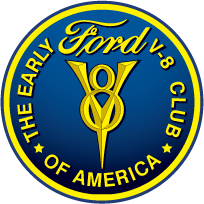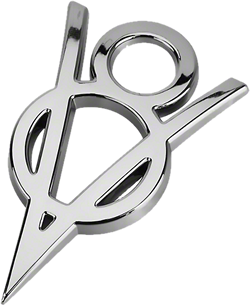| Posted By |
Discussion Topic:
1938 coupe lift points?
|



|
 Tim I
Tim I |
 05-04-2010 @ 7:02 PM
05-04-2010 @ 7:02 PM
|
|
|
|
Member
Posts: 73
Joined: Apr 2010
|
Hi,
I recently acquired a 1938 coupe, and have joined the club. The coupe is a survivor, more or less, and although it runs and drives, it will need quite a bit of work to actually be roadworthy. This is my first pre-war car, and I have a lot to learn so I'll be asking a lot of dumb questions, and will greatly appreciate any help, advice, and general guidance you can give me.
I have acquired reprints of the 1938 owners manual, the 1937-38 engine and chassis repair manual, and the 1937-48 engine repair manual, but there seems to be a lot of basic know-how that isn't covered.
My first question is this:
What are good lifting points on my coupe? Tires and brakes are first on the agenda, and I'll need to get all 4 wheels off the ground.
Thanks for any insight.
Tim
Denver, CO
|
 ford38v8
ford38v8 |
 05-04-2010 @ 10:40 PM
05-04-2010 @ 10:40 PM
|
|
|
|
Senior
Posts: 2883
Joined: Oct 2009
|
Tim, Welcome to our Forum, and to the EFV8CA. First, I'll recommend that you get three books:
A MotoRs Manual from the late 40's or early 50's. You'll find one from a out of print bookseller, and pay about $35 for a decent copy. Look in your V8 Times classified Literature section.
A Ford Service Bulletins 1938-1940 Complete. These are reproduced, and available from many sources.
The 1938 - '39 Ford Book, published by the V8 Club, and available on this website.
There are many other books available, but these three are a must for an owner of a '38 Ford.
You're on the right track, brakes are the first to get right, and yes, all 4 wheels need to be up at the same time to do it right. Don't ever use a bumper jack. Don't even think of bumper jacks. Lift from the differential, and put axle stands under both ends of the axle. Lift from the front axle, and put axle stands under both ends of that axle. If you want access under the car, put the stands on the frame itself.
I hope you have cable brakes rather than juice brakes. Properly set up, the cable brakes are better and safer, provided you convert to a star adjuster, otherwise known as "Floaters". If you don't have floaters, you'll go mad trying to keep them in adjustment. Ford had the right idea with self energizers, but the wedge adjusters wouldn't allow the brakes to float freely.
Come back with your questions often, and after a while you'll be answering the Newbies questions too.
Alan
|
 Tim I
Tim I |
 05-05-2010 @ 4:29 PM
05-05-2010 @ 4:29 PM
|
|
|
|
Member
Posts: 73
Joined: Apr 2010
|
Alan,
Thank you very much for your response, and for the information.
So, I should lift the rear end under the differential, and the front at the middle of the axle beam?
Actually, I did order the 1938-1939 Ford book from the club as soon as I joined, so I do have that. And, I have several old Motor Manuals, the oldest from 1949, which does cover my car. (I'm glad you suggested that, as I hadn't even thought to refer to it.) I will track down a copy of the service bulletins.
Yes, the car does still have the mechanical brakes, and that was going to be my next question - should I convert to hydraulics? I'm glad to hear that the original brakes can be made to work well, as I'd like to keep the car as original as possible. (Plus, I hate working on brake hydraulics!) I guess I don't know the difference between wedge adjusters and star adjusters. How can I tell what I have, and if I have the wedge adjusters, can I convert to star adjusters?
Thanks again for your help!
Tim
|
 ford38v8
ford38v8 |
 05-05-2010 @ 6:09 PM
05-05-2010 @ 6:09 PM
|
|
|
|
Senior
Posts: 2883
Joined: Oct 2009
|
Tim, Most people have heard that mechanical brakes are not as good as hydraulics, and that is true of the older rod brakes and the original '37-'38 cable brakes, unless you install Floaters. True Floaters are available for Fords from 1935 through 1938. There are more than one manufacturer, some better than others I suppose, but look at the MotoR Manual to see the original wedge setup. It is basically a large nut on the backing plate that turns to adjust a wedge in or out, and that is where the problem lies. With the pressure of the adjuster nut, the wedge is not allowed to float back and forth, which causes one shoe or the other to be constantly out of proper position. The star adjuster is better because the adjuster is a star, adjusted with a brake spoon. The star turns a a left and right threaded shaft within a housing, and is free to float where required for perfect braking action.
The installation of Floaters in a '37-'38 is simple: The adjuster nut is turned in to force the dust cap off, and continues to turn in until it threads itself off to the inside of the backing plate. This, of course, is done with the drum off. The star adjuster is then installed sidewise, and the dust cover reinstalled. On the backside now, the exposed threaded hole that had the nut (actually a bolt with a smaller diameter squared off adjuster face) is filled by that original bolt after the wedge is cut off. It is hardened, so it must be cut with a carbide saw. This is done to many if not most '37-'38's that are actually driven, and is not detectable on the Concourse if the car is shown.
For brake shoes, don't opt for the modern brass imbedded shoes. These are too hard, and will not stop an old car. There are brake supply houses that will supply good shoes for you, do your homework, I don't remember where i got mine. You do not need or want the original woven shoes, though. They are too soft and don't last long. Original brakes have 4 springs of different strength. I removed my top springs and replaced them with a single spring spanned between both shoes rather than individually to the spring anchor pins. My springs came with my Floaters, which I found at a Swap Meet, so I can tell you no more about my particular set-up, except that I no longer have to adjust my brakes every time out of the garage, and I can stop on a dime with 3¢ change back.
Alan
|
 ford38v8
ford38v8 |
 05-05-2010 @ 6:47 PM
05-05-2010 @ 6:47 PM
|
|
|
|
Senior
Posts: 2883
Joined: Oct 2009
|
Tim, Most people have heard that mechanical brakes are not as good as hydraulics, and that is true of the older rod brakes and the original '37-'38 cable brakes, unless you install Floaters. True Floaters are available for Fords from 1935 through 1938. There are more than one manufacturer, some better than others I suppose, but look at the MotoR Manual to see the original wedge setup. It is basically a large nut on the backing plate that turns to adjust a wedge in or out, and that is where the problem lies. With the pressure of the adjuster nut, the wedge is not allowed to float back and forth, which causes one shoe or the other to be constantly out of proper position. The star adjuster is better because the adjuster is a star, adjusted with a brake spoon. The star turns a a left and right threaded shaft within a housing, and is free to float where required for perfect braking action.
The installation of Floaters in a '37-'38 is simple: The adjuster nut is turned in to force the dust cap off, and continues to turn in until it threads itself off to the inside of the backing plate. This, of course, is done with the drum off. The star adjuster is then installed sidewise, and the dust cover reinstalled. On the backside now, the exposed threaded hole that had the nut (actually a bolt with a smaller diameter squared off adjuster face) is filled by that original bolt after the wedge is cut off. It is hardened, so it must be cut with a carbide saw. This is done to many if not most '37-'38's that are actually driven, and is not detectable on the Concourse if the car is shown.
For brake shoes, don't opt for the modern brass imbedded shoes. These are too hard, and will not stop an old car. There are brake supply houses that will supply good shoes for you, do your homework, I don't remember where i got mine. You do not need or want the original woven shoes, though. They are too soft and don't last long. Original brakes have 4 springs of different strength. I removed my top springs and replaced them with a single spring spanned between both shoes rather than individually to the spring anchor pins. My springs came with my Floaters, which I found at a Swap Meet, so I can tell you no more about my particular set-up, except that I no longer have to adjust my brakes every time out of the garage, and I can stop on a dime with 3¢ change back.
Alan
|
 minasam09
minasam09 |
 05-05-2010 @ 11:14 PM
05-05-2010 @ 11:14 PM
|
|
|
|
Member
Posts: 3
Joined: Apr 2010
|
Length and lie of clubs
golf clubs for sale are usually made up in three different lies: flat, medium, and upright. The standard-length driver is 43
inches, and the two-iron, the longest iron club, is 382 inches long(ishiner). The length and lie of clubs are determined by the distance the hands are from the ground.
|
 Tim I
Tim I |
 05-06-2010 @ 6:44 AM
05-06-2010 @ 6:44 AM
|
|
|
|
Member
Posts: 73
Joined: Apr 2010
|
Thanks Alan. I'll let you know how I get along.
Tim
|
|


 Reply to Discussion
Reply to Discussion


 Tim I
Tim I